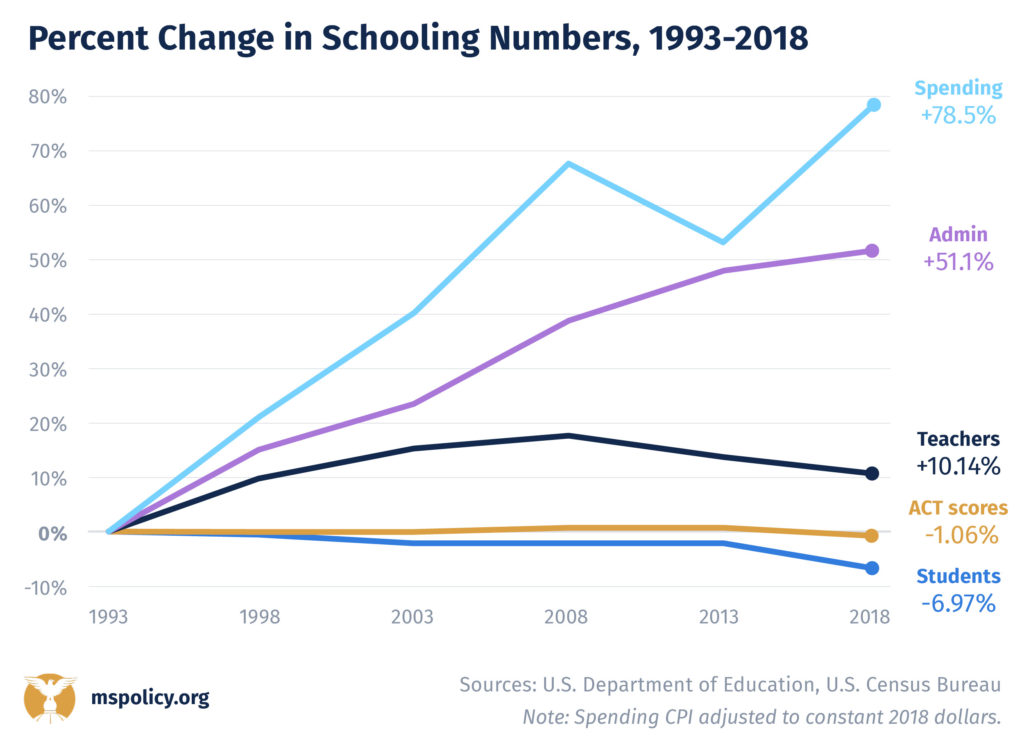In 1993, K-12 spending from state, federal and local sources added up to$2,737,277,644, adjusted for inflation. By 2018, that figure ballooned to $4,886,998,652, despite the number of students shrinking from 505,907 in 1993 to 470,668 in 2018.
While the number of public school students decreased by 6.96 percent, the number of Mississippi teachers increased by 10.13 percent
But despite the additional spending, student outcomes when judged by the ACT test remain mired in the doldrums.

Composite scores on the ACT test from 1993 to 2018 remained largely static at 18.7, a solid determinant of student performance since all public school students in the state take the test and it measures readiness for college work in four subject areas.
These findings are in line with a report by state Auditor Shad White’s office. It showed that the growth in K-12 spending on administrative and other non-classroom costs from 2007 to 2017 outpaced the increase in the amount spent in the classroom.
According to the report, administrative costs increased 17.67 percent during the decade, while instruction costs increased 10.56 percent.
The biggest gain for administrative staff at Mississippi public schools wasn’t school administrators — which increased from 1,478 in 1993 to 2,003 in 2018, a gain of 35.52 percent — or district administrators, whose numbers went from 833 in 1993 to 976 in 2018, an increase of 17.17 percent.
Personnel listed as administrative support staff, either at the individual school or district level, increased 37.54 percent during that time.
The number of teachers increased from 28,376 in 1993 to 31,252 in 2018.
One gain in student performance has been on the National Assessment of Education Progress (NAEP) tests administered to fourth graders.
In fourth grade mathematics, Mississippi students have improved from 202 in 1992, which was 17 points below the national average, to 235 in 2017, which is only four points below average. In 1992, only 36 percent scored at or above a basic achievement level in mathematics. In 2017, 77 percent were at or above the basic level.
On the fourth grade reading test, the state average score was a 215, six points below the national average. That’s a huge improvement from 1992, when the 199 average by Mississippi students was 16 below par nationally. In 2017, 60 percent of the state’s fourth graders were at or above a basic achievement level in reading. That’s a drastic improvement from 1992, when only 41 percent of Mississippi students were considered at least proficient at a basic level.
Between 2009 and 2015, the state’s average on the science test for fourth graders improved by seven points, rising from 133 to 140.
The data from the analysis came from the U.S. Census Bureau, the National Center for Education Statistics and the ACT board. The Census bureau releases an annual survey of school system finances, while the NCES issues an annual report on the number of students, teachers and other data. The ACT issues an annual report on how test takers perform.